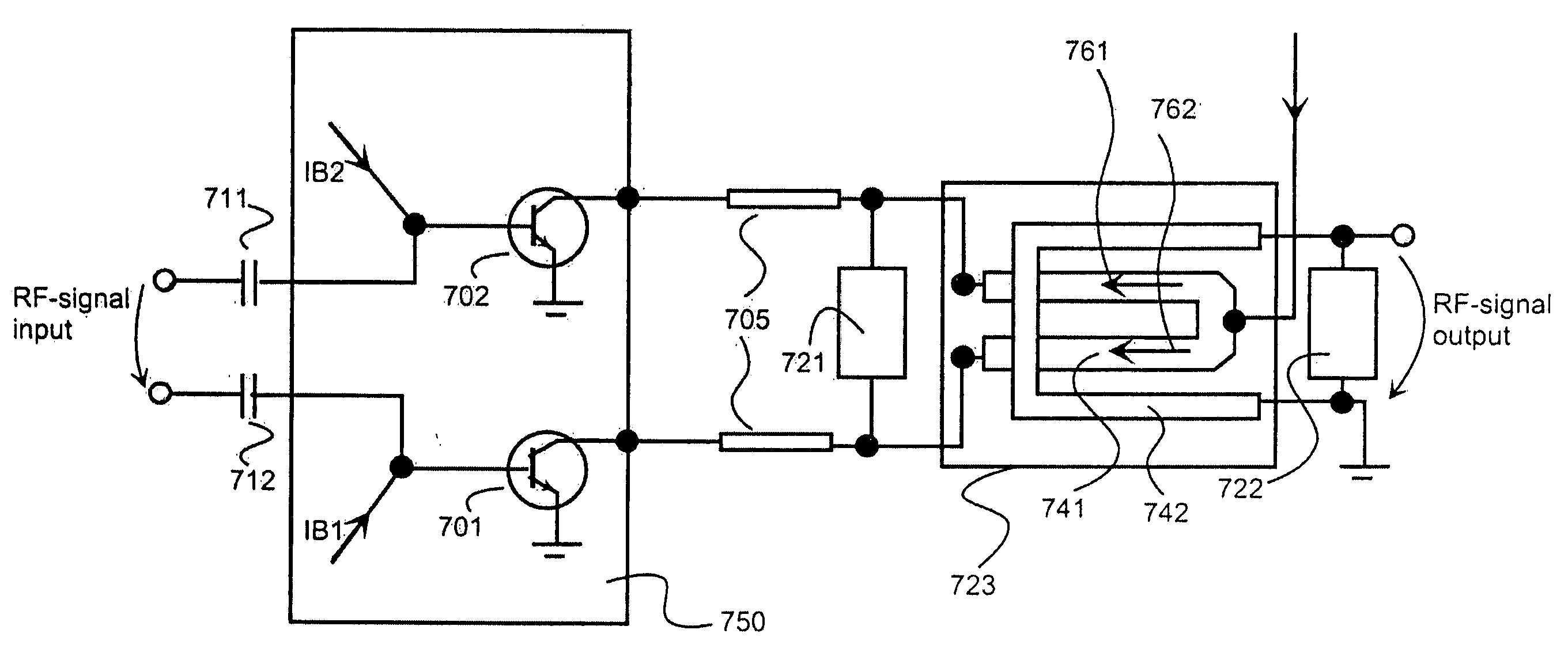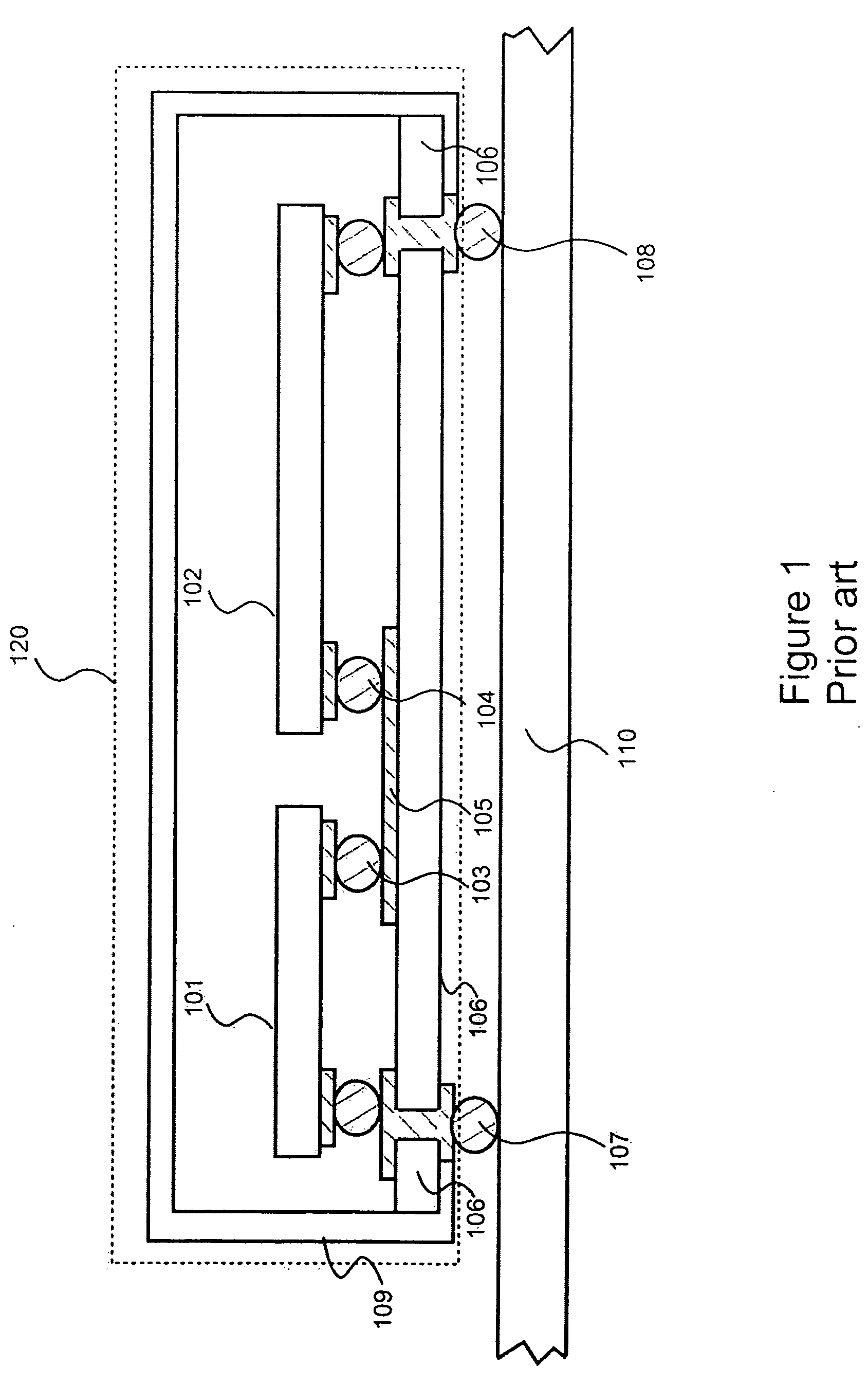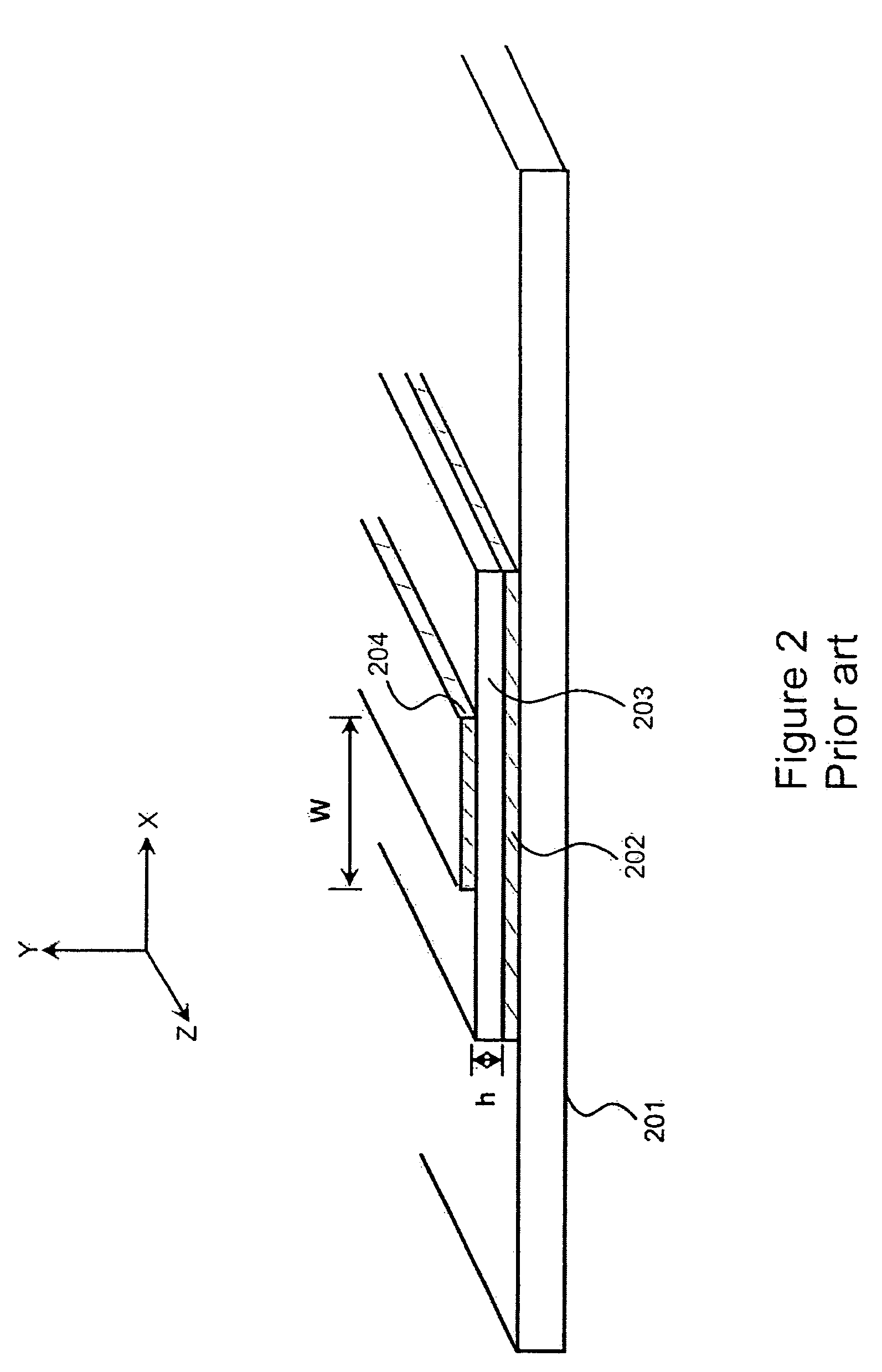Low-loss microstrip transmission line structure and a method for its implementation
- Summary
- Abstract
- Description
- Claims
- Application Information
AI Technical Summary
Benefits of technology
Problems solved by technology
Method used
Image
Examples
Embodiment Construction
[0070] A microstrip and a ground plane are co-operative parts of a transmission line system along which a signal propagates in a form of electromagnetic fields between the microstrip and the ground plane. One or more microstrips may use a same ground plane in common. In a microstrip structure according to the invention a microstrip is an integral part of the passive or active part of an RF-IC, and a ground plane is an integral part of the base plate of an RF-IC. FIGS. 4a, 4b and 4c present side view cross-sections of exemplary embodiments of the invention. The part 451 in FIGS. 4a, 4b and 4c may be either the passive part of an RF-IC or the active part of an RF-IC, and hereinafter the part 451 is referred as ‘the electrical part’. The direction of the signal propagation is normal to the figure plane.
[0071] In FIG. 4a a microstrip 410 is an integral part of the electrical part 451 in a way that the microstrip 410 is inside the electrical part 451. A ground plane 411 is an integral p...
PUM
 Login to View More
Login to View More Abstract
Description
Claims
Application Information
 Login to View More
Login to View More - R&D Engineer
- R&D Manager
- IP Professional
- Industry Leading Data Capabilities
- Powerful AI technology
- Patent DNA Extraction
Browse by: Latest US Patents, China's latest patents, Technical Efficacy Thesaurus, Application Domain, Technology Topic, Popular Technical Reports.
© 2024 PatSnap. All rights reserved.Legal|Privacy policy|Modern Slavery Act Transparency Statement|Sitemap|About US| Contact US: help@patsnap.com










